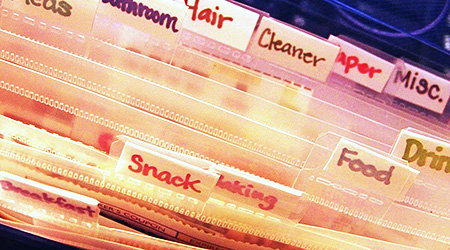25 Tips to Save on Food

For many families, food can make up 20% of an annual budget so any time you can save money on food it can help make managing finances easier overall. Below are 25 of the best tips to save when buying food while still finding something for everyone and putting your money to better use somewhere else.
1. Buy in Bulk
Paper products and toiletries as well as rice and flour are great to buy in bulk since they last forever, relatively speaking, and can be significantly less expensive compared to smaller sizes.
2. Avoid Name Brands
Many store brands and generics are as good if not better than name brand products. Milk and other staples have little difference in quality regardless of what advertisers may say.
3. Use Coupons
Efficient use of coupons can save hundreds of dollars on food within a few months. Check your weekly flyers and go online to get the best coupon deals.
4. Substitute Ingredients
Many recipes have flexibility in selecting ingredients and there are numerous items which can be substituted for less expensive alternatives.
5. Stop Buying Bottled Water
Bottled water is the biggest scam ever! Purchase a refrigerator or kitchen sink filter to provide a better taste for perfectly healthy tap water.
6. Price Match
Many grocery stores will offer price matching to lure consumers and increase sales. Produce, bread and milk are often cheaper but at different locations so use price matching to limit your number of trips and save money.
7. Buy Produce in Season
Fruits and vegetables are seasonal and when they're in season they can be purchased for pennies on the dollar. High volumes and a short sales window lead to rock-bottom prices for consumers.
8. Prepare it Yourself
Paying a 50% to 100% markup to have someone cut up your apples or pineapple for you is crazy. Take 5 minutes and save money by preparing fruits and vegetables yourself.
9. Make Your Own
Preparing most meals yourself will not only be less expensive but often taste better and be healthier. Baking cookies with your kids or cooking spaghetti sauce from scratch is cheaper than buying prepackaged meals and snacks.
10. Go Vegetarian
Fruits and vegetables are normally less expensive than meat and poultry. Even if you don't become completely vegetarian, cutting back on meat is healthier and will save money.
11. Use a List
Walking into a grocery store with a vague idea of what you need to buy will easily add hundreds of dollars a year to food purchases. Create a list and stick to it.
12. Plan Menus
You won't know what to buy if you don't know what you're going to make. Planning menus in advance let's you purchase only food items necessary to create meals minimizing wasteful spending.
13. Don't Buy Snack
Snacks such as cookies, brownies and cakes are some of the most expensive products that can be purchased for your family. Besides being unhealthy, it is normally better to make them yourself.
14. Shop Online
Many groceries including food can be purchased online from select retailers. Even if you are uncomfortable purchasing food, other nonperishable items are often less expensive.
15. Freeze Leftovers
Making the maximum serving amount for a given recipe and then freezing the leftovers can create two or three extra meals reducing costs.
16. Use Everything First
Instead of going shopping and buying new items make sure you've thoroughly gone through your pantry and cabinets first. Additional meals can be made with what is already on hand.
17. Get a Rain Check
Some stores offer rain checks for items that have limited quantity or are special deals. While not universal, it always pays to ask if you can get a rain check on a Christmas ham or Thanksgiving turkey.
18. Get Membership Cards
Most grocery stores offer membership programs which provide 10% to 30% off most products. The trade-off is that they track your purchases by selling your information to advertisers for targeted marketing.
19. Double Check Receipts
Grocery store receipts have inordinate amounts of errors in the retailers favor. Before heading out the door take a second to review your receipt and get a credit if it is incorrect.
20. Compare Unit Price
Bigger isn't necessarily better when it comes to purchasing food so always double check the price per ounce to make sure you're getting a good deal.
21. Send Off Rebates
Larger or seasonal items often have rebates associated with the purchase. Take the time to send in rebates since a few dollars here and there can add up to significant savings over the course of the year.
22. Bottom Shelf Buys
Higher-priced higher-margin items are normally at a consumers eye level. Try shopping from the bottom shelf to get the best deals when purchasing food.
23. Substitute Sodas
Soda has not only lead to an obesity epidemic among children but it is also more expensive than alternatives like Kool-Aid and sweet tea.
24. Extend Meat
Stretching out ground beef by incorporating oatmeal and cottage cheese is a common way to create more portions. These additives are significantly less expensive than making an equivalent amount in purely ground beef.
25. Save Free Condiments
If you eat out periodically at fast food restaurants, save the free condiments that come with your meal. Salsa, ketchup and barbecue sauce last virtually forever and can save money.
Elsewhere on StockMonkeys.com







